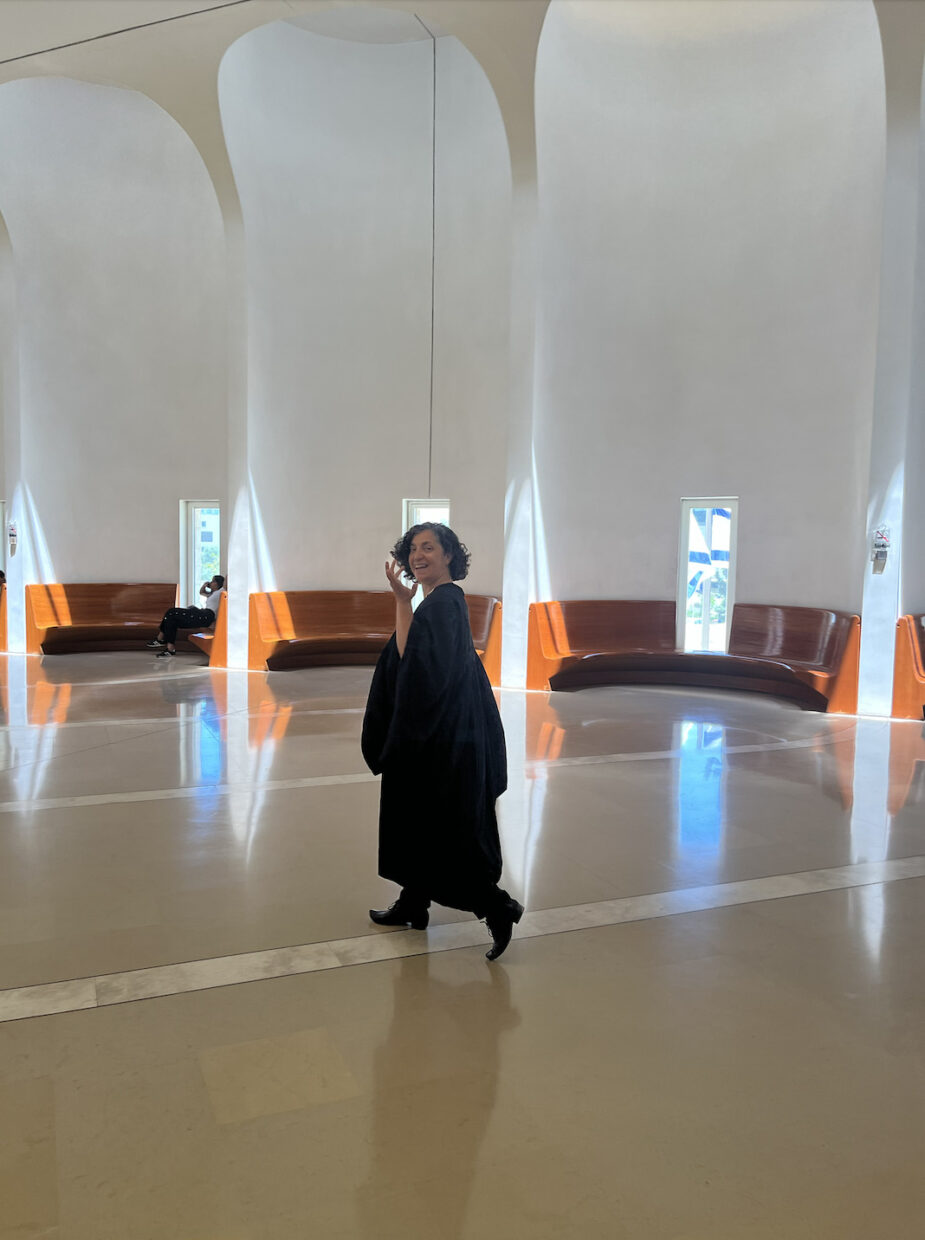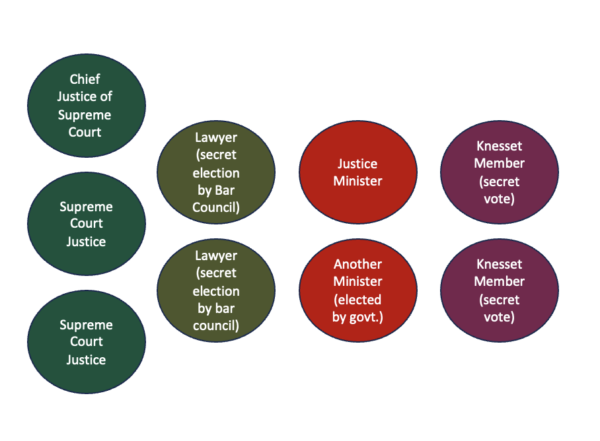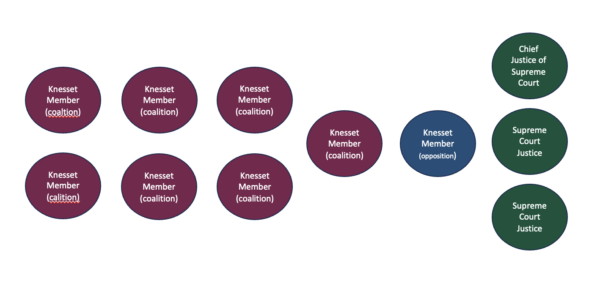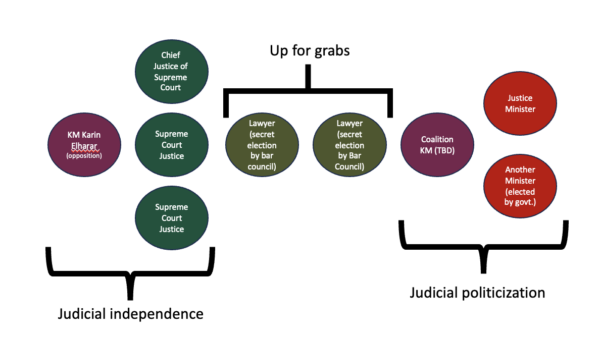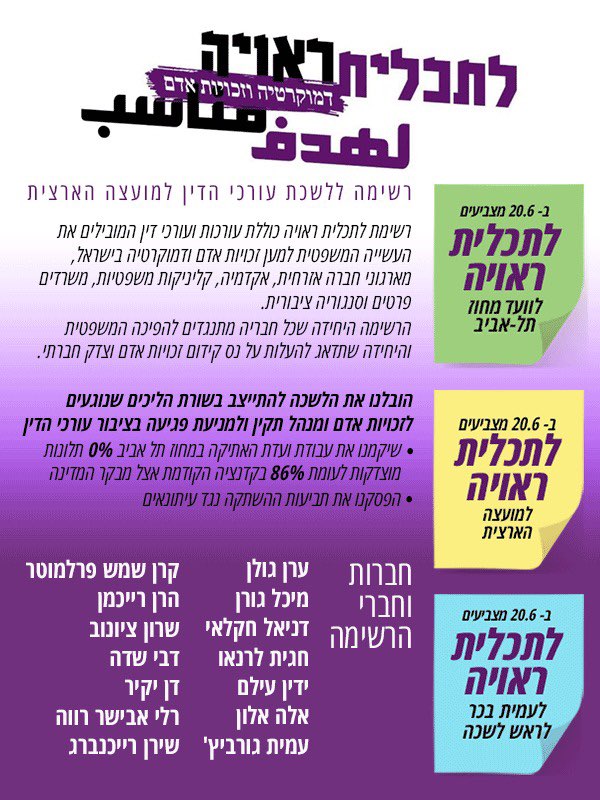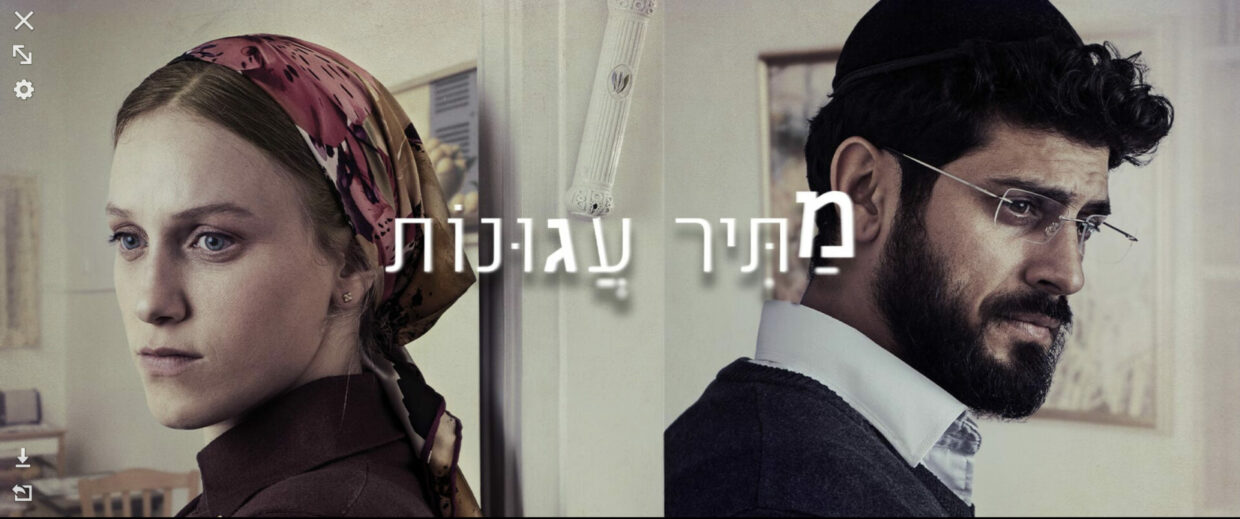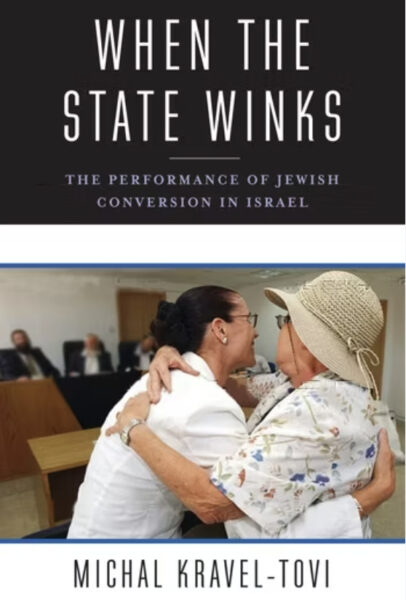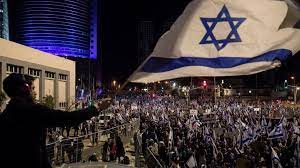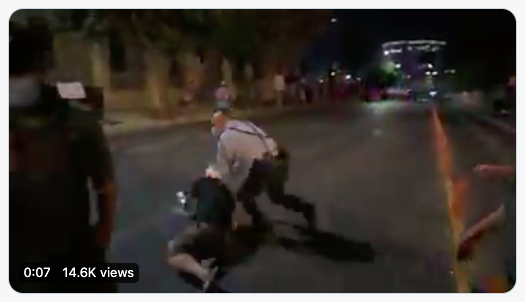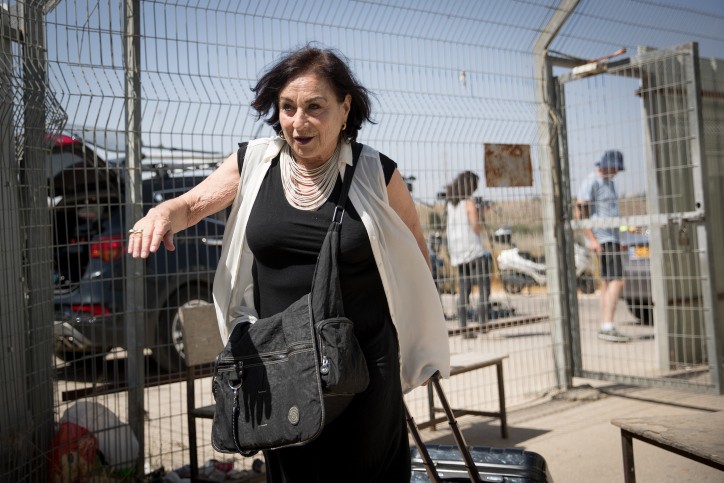In May 2016, Mirwat Abu Jaleel, an Arab-Israeli woman, was horrifically stabbed to death eleven times in her bedroom in her home in Shefar’am. Her oldest son, Nasrat, told the police that he woke up hearing a struggle. As he exited his room, he saw his neighbor, Ashraf Tahimer, running toward him in the hallway, holding a knife in one hand and making a fist in the other. Ashraf hit Nasrat in the mouth, breaking one of his teeth, and fled the home through a window downstairs. Mirwat’s younger children told the police that they saw Ashraf enter the home through the same downstairs window, take a knife from a kitchen drawer, remove his shoes, and ascend the stairs to Mirwat’s bedroom. The police did not find Ashraf at home–he had fled–but the next day he surrendered. At his interrogation, Ashraf denied having had anything to do with the murder. Nevertheless, when the police searched the crime scene, they found Ashraf’s shoes in the kitchen. The court did not believe Ashraf but found the prosecution witnesses, Nasrat and the other kids, credible, and convicted him of murder.
Today I attended the oral argument in Ashraf’s appeal at the Israel Supreme Court. My long-time friend and colleague Hagit Lernau, a longtime senior veteran of the National Public Defender’s office and now a criminology professor at Haifa University, argued the case for the defense (she’s pictured above in her robe, getting ready for court) and so I tagged along to help her prepare and see the argument. The hearing proved to be a disquieting inquiry into questions of truth, credibility, biases, and heuristics. It’s as gripping and horrifying as a classic detective novel, and offers important lessons to anyone investigating and adjudicating crime.
Ashraf does not make for a particularly cuddly appellant. He has a long history of petty crime and heavy drug use. He is also quite impulsive and found it difficult to sit quietly during the hearing. He was also disliked in the neighborhood because of his lifestyle. But, as he repeatedly told the police and the factfinding court, he had no reason to kill Mirwat. They had a good neighborly relationship and, while she did not approve of his lifestyle, she was always kind and welcoming to his son. Indeed, he had serious disincentives: killing Mirwat would create a deadly conflict between his family and the Abu Jaleels, putting his children in danger of retaliation (indeed, following Ashraf’s arrest the Tahimer home was burned to the ground, and the entire family had to flee the town.)
By contrast, Mirwat’s family had ample motive to murder her. Mirwat was divorced and her ex-husband, Ibrahim, found a younger woman. Mirwat’s independent, open life was a threat to the patriarchal family structure. Arab Israeli women are overrepresented as murder victims, and divorcées are at a particular risk. Most murders of Arab women are never solved; out of those solved, most are perpetrated by a partner or other family member and related either to family honor or to retaliation for some offense committed by a man. In 36% of cases, the murder is witnessed by at least one child or another family member.
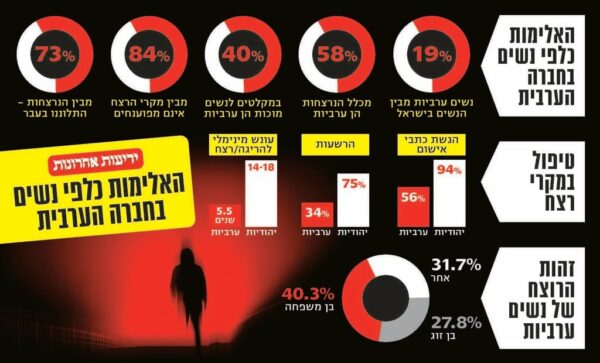
Given these statistics, which are well known to the police as part of the depressing picture of violent crime among Arabi Israelis, you’d think the investigative team would at least question the Abu Jaleels’ version. But they accepted wholesale the testimony of Mirwat’s family members, all of whom denied having had anything to do with her murder. They claimed that Mirwat and Ibrahim were on the path to reconciliation, and had met with a third party (some said a sheikh; some said a lawyer; some said three weeks prior; some said three days prior) to sort out their differences. The police never sought to confirm or refute this story. Ibrahim himself, who would’ve normally been the prime suspect, was conveniently out of the country when the murder took place (I’m told this is not an uncommon pattern in family honor killings–there’s already somewhat of a playbook for these crimes.) Nasrat, Mirwat’s son, even said that he could provide a motive for Ashraf to commit the murder: a few days before murder, Nasrat overheard Ashraf promise his son an Xbox if he improved his grades. There was an Xbox in the Abu Jaleel’s home–in Mirwat’s bedroom, in fact–and Nasrat testified that after he found his mother’s lifeless body in a pool of blood, he located the Xbox disconnected on the floor, put it back in place and reconnected the wires. This version of events was utterly refuted by forensics, who found that the Xbox had not been disconnected, reconnected, or moved at all recently. Even this considerable contradiction–suggesting a fabricated motive for the suspect–did not lead the police to doubt the Abu Jaleels or look elsewhere for suspects. They were focused on Ashraf as the one and only suspect.
The children testified that Ashraf had climbed up to their home through one of the windows. But the crime scene photos clearly show that the electric shutters are lowered all the way in all windows, and the children said that the family kept them shut (after being confronted with this problem, one of the children pointed out that the one shutter would sometimes be open to let in fresh air.) The act of climbing up the wall requires some dexterity. During the investigation, a police officer secured in a harness attempted to climb to the window and into the house, and while he was not initially successful, he did eventually manage to get in. However, on his way out he broke a fragile piece of the window, raising questions as to whether it would be possible for Ashraf to enter/exit and leave the window intact. But on top of all this, it turns out that Ashraf suffers from a shoulder prone to dislocation. An orthopedic expert testified at trial; his uncontested expert testimony was that Ashraf’s shoulder would have likely been dislocated by the effort (he gave that a 90% chance of happening) and, in fact, was dislocated later at his jail cell by the mere act of raising it.
At this point, you might wonder whether the entire debacle is unnecessary: surely, in the course of climbing into the house, walking to the kitchen, pulling out a drawer to get a knife, walking to the bedroom, and having a violent struggle with the victim involving copious blood, the perpetrator must have left forensic residue behind! The answer is: none was found. The forensic team lifted 27 fingerprints from the home, emphasizing the course that Ashraf allegedly took. 26 did not match his and one remained unidentified. No DNA of his was uncovered–no skin, no blood–and no blood smears were visible on the way from the victim’s body to the window. All prosecution witnesses attested that Ashraf was not wearing gloves at any point during the event. At the factfinding court, he prosecution argued (successfully, apparently) that Ashraf must have smeared away his own fingerprints, as well as the blood, when he climbed back out of the window, or that his criminal experience prompted him to clean up his own fingerprints as he went along. Such a course of action, for someone under drug influence and with a weak shoulder, defies credibility: did he hold himself up with the bad shoulder and wet-wipe his own fingerprints off as he went along?
We all know the legal rule that the absence of evidence is not evidence of absence. But scientifically speaking, we can sometimes learn from absence of evidence–particularly when the probability of finding the evidence would have been high. Prof. Lernau, who on top of being a terrific litigator has a curious scientific mind, wondered: how likely is it for someone to engage so thoroughly, in such a tactile manner, with a crime scene, and not leave a trace? There is apparently considerable variation among people in propensity for leaving fingerprints (it has to do with grease and moisture in the skin, etc.) and surfaces vary in how well they absorb and retain fingerprints. With the assistance of Dr. Naomi Kaplan-Damari, a forensic criminologist at Hebrew University, the defense team ran a little experiment. They instructed fifty staff members to touch similar surfaces to the ones at the crime scene. Even for the people less prone to leaving fingerprints, the odds of not leaving a trace were extremely small.
There was, however, one crucial forensic finding: a human tooth located at the top of the bed, where Mirwat had lain her head before she was attacked. The tooth did not belong to Ashraf; it belonged to Nasrat, Mirwat’s 17-year-old son. As you’ll recall, Nasrat told the police that Ashraf punched him in the hallway when fleeing the scene and dislodged the tooth. If so, how did the tooth make it to the bed? Nasrat claimed that he had reconnected the Xbox in his mother’s bedroom, but that proved false. He did, according to his own testimony, attempt to revive his mother alongside the other family members, but the body was at the entrance to the bedroom, about 2.5 meters (8 feet) from the bed. The tooth would have had to migrate from the hallway to the bed on its own, or it would have had to be dislodged during the resuscitation attempt (but not on the bed). Or, which would be a more plausible explanation, it would have broken off in the first place not as a consequence of a hallway fight, but during a struggle on the bed with the victim.
But let’s assume, again, that Ashraf escaped from the house the same way he got in–through the window, with no shoes on, and miraculously without smearing any of the copious blood from the crime scene or leaving any fingerprints or footprints on his way out. How did he get home? There are two paths leading from the Abu Jaleel home to the Tahimer home: one is short and leads to the front door, and the other takes a roundabout way and ends in the rear steps of the Tahimer house. The claim is that Ashraf snuck out that way because, as it happens, a nearby home has a camera mounted on the roof that continuously films that allley. For many hours before and after the supposed commission of the crime, only one figure is visible on camera. It is the blurred image of a man holding a knife. The man cannot be identified, and the police assumed it was Ashraf making his escape. This fit testimony from a neighbor, Omri Nadaf, who testified that he saw Ashraf heading to the alley.
Was it Ashraf? Apparently not–according to the prosecution’s own witnesses. Nasrat’s uncle, Wahel, was with his parents, locked in, during the murder. According to Wahel’s testimony, Nasrat, who discovered the murder, ran over and screamed that Ashraf had murdered his mom, and Wahel immediately grabbed a knife, ran out of the front door, and made it to the Tahimer home using the back alley. On cross-examination, Wahel agreed with the defense that he walked that path during the relevant time. As mentioned above, there is only one figure who walked there with a knife. It therefore must have been Wahel. But this would mean that the neighbor’s testimony about seeing Ashraf was wrong (mistaken or deceitful.) If the man in the alley was Wahel, this would also explain the inconceivable timeline by which Ashraf would’ve left the home, managed to get out of the window, make it to the alley, and somehow clean himself enough to appear nondescript on camera within two minutes.
It’s worth reminding U.S. readers that Israel has no jury system. Verdicts are given by professional judges and, in serious offenses, by a panel of three judges. The panel that convicted Ashraf wrote an extensive decision, in which they flat-out rejected the forensic and objective crime scene data and relied primarily on their credibility observations: namely, they believed the family and disbelieved Ashraf, and that was that. As we all know, appellate courts cannot substitute their own impressions of credibility for those of the factfinding forum, which is what the Supreme Court judges reminded Hagit at the hearing. A recent high-profile Israeli case, however, highlights the fact that credibility findings cannot stand when they contradict objective facts. The judges kept asking the same question again and again: how can the appellate court overcome the fact that four witnesses–including children–were all found credible? Hagit kept replying: then what do we do about the impossibility of climbing the window, the lack of forensic evidence, the location of Nasrat’s tooth, and Ashraf’s invisible escape back home?
The hearing highlighted some of the inherent tensions in evidence assessment, which apply to professional judges as well as to juries and laypeople. The first one had to do with the appropriate weight, if any, to allocate to the absence of evidence. The prosecution dismissed Dr. Kaplan’s probabilistic demonstration as “amateur fingerprint science.” This was a mischaracterization: it was an exercise in statistical probability. Of course, it is not a cardinal rule that any case lacking forensics must end in an acquittal; however, in situations where the expectation of forensics is extremely high, negative inferences from their absence are not only possible but logical. It shouldn’t take a huge taxonomical effort for an appellate court to separate their deference to credibility findings from their completely legitimate authority to deduce
While the judges listened attentively to the defense’s oral argument, some of them seemed extremely resistant to the idea of reversing the verdict, and it was obvious that the source of the resistance was the credibility issue. Two of the judges, at different times, said that they needed something more–something positive–to overcome the lower court’s positive impression of the witnesses. The barrier of overcoming the credibility findings sometimes threatened materially exculpatory evidence: at least one of the judges was willing to suspend disbelief about Nasrat’s tooth’s supposed path from the hallway to the bed because the alternative was just too hard to consider in light of the credibility issue.
This all boils down to a central defense strategy concern, which I discuss extensively with my criminal procedure students every year. When, as in this case, the defense argues that the crime was committed by a different perpetrator, the jury is confronted not with the basic challenge of criminal burden of proof–assessing the probability of one story by its own strengths and witnesses–but with a comparison between two different stories. Jury calibration of burden-of-proof is notoriously tentative as it is, and the natural and understandable tendency of a layperson confronted with two different versions of the same event is to compare them to each other and pick the more likely one–even if the comparative likelihoods are 60-40 and the likelihood of the prosecution’s story falls far short of the normal standard of conviction (90-10? 95-5? depends on who you ask.) The hearing made it plainly obvious that this human tendency to compare stories and disengage from the legally required calibration could not be easily overcome even by erudite, experienced professional judges. “But how do you expect us to buy,” they kept asking, “that an entire family conspired to frame Ashraf? Including four children, some of them little? And over the course of such a lengthy period of time? When in this version the victim’s own son is supposedly the killer, or one of the killers?”
The legally correct answer to this question is, of course, that the court does not have to “buy” this alternative story with certainty, nor does it have to find it more probable than the alternative (a man who cannot climb windows climbs and enters an apartment through a closed window, commits a heinous crime, flees an extremely tactile scene leaving not a shred of forensic residue behind him, and somehow ends up at home avoiding detection by camera on the only path he could’ve taken.) All the court has to agree to is that there is a five-percent, or ten-percent, chance that events could have unfolded according to the alternative story to acquit. That’s how reasonable doubt is supposed to work.
Thing is, the court’s resistance to the alternative story is understandable. It’s the stumbling block I kept hitting when we practiced oral argument the night before the hearing. To believe even a shred of the alternative story, one has to ascribe the Abu Jaleel family a level of sophistication befitting the villains in a highly contrived Agatha Christie novel. The family would’ve had to decide ahead of time not only on the honor killing, but also on the alibi for Ibrahim, the father (who would have to be out of the country). They would have to expect 17-year-old Nasrat to be a perpetrator, or at least a seriously involved accomplice, in the murder of his own mother. They would have to decide to frame Ashraf ahead of time. Wahel, who gave Ashraf a large quantity of drugs the day before (he testified about it) would have done so intentionally, so as to dull Ashraf’s senses and make him a convenient target. The family members would have to rehearse the young children extensively in the Ashraf story. After the chaos and destructive energy involved in the murder, as they supposedly ran over to the Tahimer home to take revenge, someone (Nasrat? Wahel? Someone else?) would need to have the presence of mind to take Ashraf’s shoes and place them in the kitchen. Nasrat would have to change his version of his encounter with Ashraf to fit the loss of his tooth. The neighbor, Omri Nadaf, would have to be contacted to provide a fictitious account of Ashraf’s escape. Everyone, including the kids, would have to stick to their version of events over the course of years.
This is a high cognitive hurdle, but two important factors can help overcome it. The first is what Holmes says to Watson in Conan Doyle’s The Sign of Four: “How often have I said to you that when you have eliminated the impossible, whatever remains, however improbable, must be the truth?” The family conspiracy, while improbable, is possible; Ashraf as a perpetrator is impossible. The only possible conclusion is that the improbable-but-not-impossible event is what actually took place.
The second factor makes the improbable less improbable: there are well-known sociological realities about the modus operandi of family honor killings. Police officers, attorneys, and judges who investigate and adjudicate these cases are fairly familiar with these cases. Unfortunately, honor killings of Arab-Israeli women are extremely common. In 70% of the cases, family members are the killers; the remaining 30% usually involve some inter-family conflict, in which the woman’s murder is an act of revenge upon a transgression by the husband. In 36% of the cases, at least one child, and often other family members, witness the crime. There are known cases, including the one I reviewed in this article, in which adolescents and teenagers (more often sons, but sometimes daughters) kill their own mothers, and sometimes their younger siblings, by family command, fearful for their own lives if they refuse. In highly patriarchal families, a command from a father or uncle to tell a fictitious story is law for the kids. It is easy to manipulate young children into lying about an event, especially if they (hopefully) did not witness it in person. This was a highly patriarchal family, involving traditional polygamy patterns (Mirwat divorced Ibrahim after he added a younger woman to the family.)
When a judge says, as in this case, “I can’t believe that children could be complicit in this kind of murder-and-framing-conspiracy,” he or she are most likely thinking about the improbability of something so horrifying happening in their own family. Indeed, educated judges from affluent, successful families–most of the time Jewish-Israeli families–would find this horrid scenario very far removed from their personal reality and their surrounding social milieu. It’s important to remember that not every Supreme Court judge is appointed after a long judicial career in lower courts. Some of them are former academics or commercial litigators, who would not have encountered the catastrophe of misogynistic, patriarchal violent crime in Arab communities anywhere in their social or professional circles. And yet, entire cities and towns live in terror of these crimes, to the point that leaders in the Palestinian community feel helpless and call for the intervention of the very police force that oppresses them. My family, who lives in the north of the country and has many personal and professional connections with Arab Israeli citizens (my dad had scores of Palestinian colleagues, employees, and students from local towns and villages; as a judge, my mom interacted for decades with scores of legal professionals, defendants, victims, and witnesses from Palestinian communities) is intimately familiar with these realities, including lovely, law-abiding people who are desperately looking to move because they can’t let their kids out the door unsupervised. What happens in some of these towns mirrors the worst inner-city environments in decrepit skid-row places in the U.S., and honor-related fights between extended clans (“hamulas”) and within families echo the worst of U.S. gang violence.
How Arab-Israeli violent crime reached these virulent proportions of pathology and sophistication is a matter of debate and speculation. Some believe that successful interrogations and prosecutions that crippled the Jewish-Israeli organized crime underworld created a void, into which Arab-Israeli criminal enterprises stepped in. Others think that the lack of opportunities for Arab-Israeli adolescents, fueled by deep inequalities, racism, and animosity, create a natural pool of potential “soldiers” for these enterprises. Yet others speak of patriarchal cultural norms that are difficult to root out. People who are steeped in these crimes already know that they are committed with frequency, and that there is considerable community knowledge and expertise in committing them and escaping scot-free (only 24% of homicides where the victim is an Arab-Israeli woman are ever solved, compared with 84% of crimes in which the victim is a Jewish-Israeli woman.) This reality can help demystify the Agatha-Christie-like quality of the defense’s alternative story. But to accept it would mean to live in the real, unfortunate world, not in the idealized world in which some judges might live, in which women are free to divorce abusive husbands, live free and open lives, without fearing violent consequences from their own partners and children.
I have a final observation about what I saw yesterday. When Ashraf was brought into the courtroom, flanked by guards, several nasty bruises were clearly visible on his face. He grimaced in pain and found it hard to sit down, asking permission to stand for part of the hearing. Had I been the judge in this case, the first thing I would do would be to ask him, “how are you?” and “what happened to you?”. To my astonishment, not a single member of the judicial panel bothered to figure out the provenance of the bruises or evinced compassion toward Ashraf in any way. I don’t think this is entirely unrelated to the legal aspect of what happened in this case.

